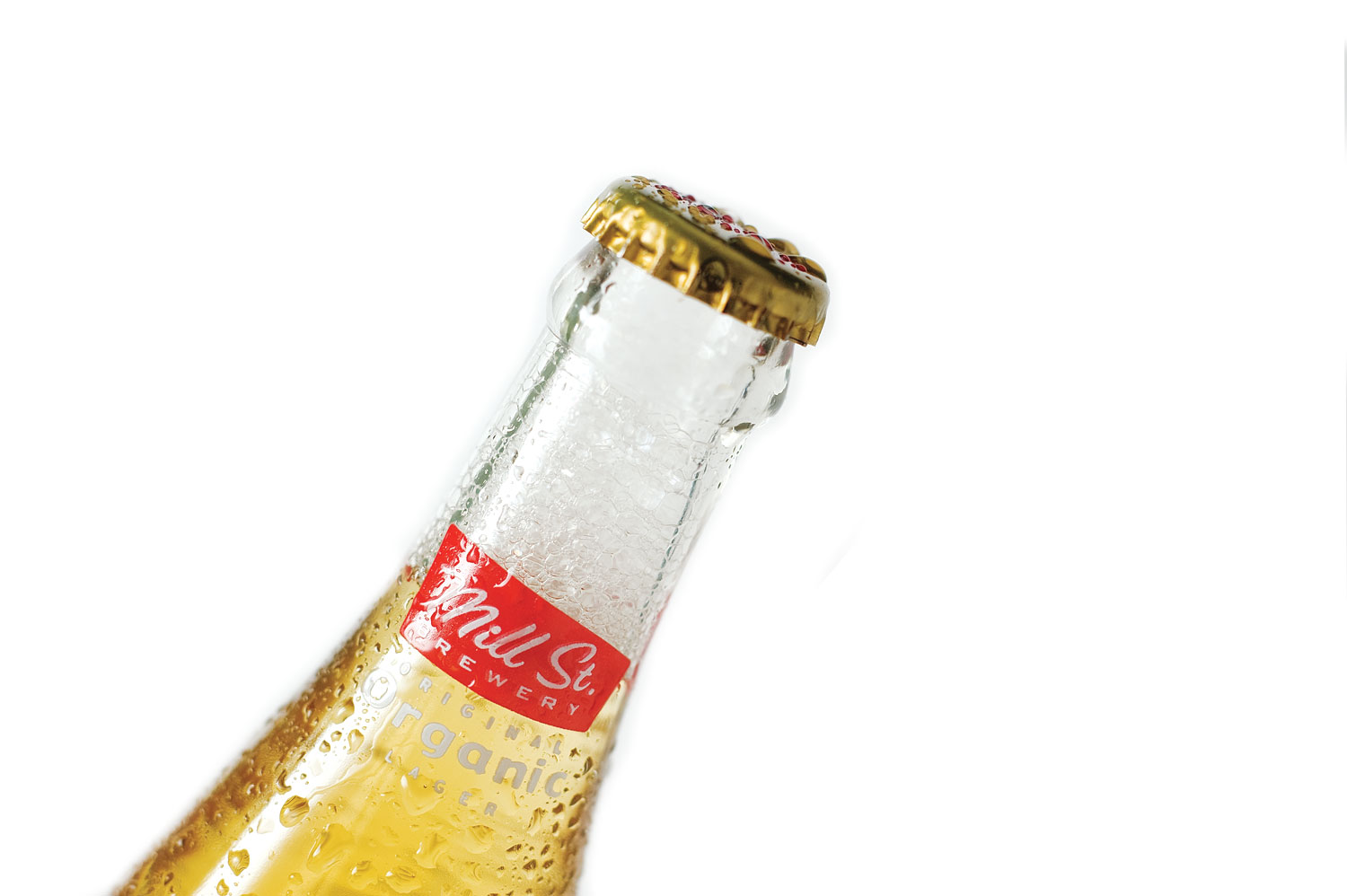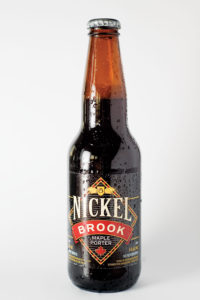Mike Sholars
Features & Opinions Editor
Two foreign companies control almost 90 percent of Canada’s beer market. On the shortlist of Canadian stereotypes, beer ranks right up there with hockey and excellent manners. But the three biggest Canadian-owned brewing companies in recent memory – Molson, Labatt and Sleeman – were all purchased by larger multinational corporations in the last two decades.
Molson Canadian, for example, merged with American company Coors in 2005. Most brewing companies also turn out multiple labels, so the effect is more profound than you probably realize. Rickard’s, Keith’s, Labatt Blue, Creemore: not one of these pub favourites is actually made by a Canadian- owned brewery.
In fact, the largest remaining independent Canadian brewing company is Moosehead, who’ve netted around five percent of the national market.
Up until a few weeks ago, I wasn’t aware of any of this. I was content believing Canadians drank beer while Americans drank beer-flavoured water. It was one of the few inarguable truths of my universe, and I do not enjoy having my beliefs shaken.
Many enjoy beer largely because it’s easy to use and understand. Step one: drink beer. Step two: repeat until personal problems seem less daunting. However, if you’re willing to dig a little deeper, you’ll find a staggering amount of different beers made by passionate brewmasters.
When it came time to research this article, I went to the only logical destination: Toronto Beer Week.
The first annual Toronto Beer Week (TBW) was held Sept. 20 to 26 this year. The kick-off event at the Mill St. Brew Pub in the historic Distillery District started with the cracking open of the first cask at 11 a.m. sharp – the earliest hour you can legally serve beer in the province. The moment was honoured by Steve Peters, speaker for the House of Legislature; in short, it was officially a Big Deal.
Although there are several food and drink festivals in Toronto, TBW was put together as a labour of love, dedicated to beer itself. Troy Burtch, one of the event’s founding staff, told me that TBW simply came out of a love for good beer that was shared by enough people that grew into a week-long event.
“We originally had a minimum target of 30 [pubs and restaurants involved.] We thought that was a good number,” said Burtch about the overwhelming response to the event. “Once we started talking to licensees, the response was tremendous; we have about 50.”
The event itself can be compared to local food festivals like Winterlicious and Taste of the Danforth; throughout the week, venues throughout the city offered affordable local craft beers, alongside information seminars and organized pub crawls. I personally attended several events, including a fascinating hour-long lesson on how to make true Belgian wit beer. Burtch, along with John Bowden, Toronto Beer Week executive director, aim to make the week into Toronto’s Oktoberfest.
After a week of educational drinking, I felt knowledgeable enough to pass on what I’ve learned. And thus I present: Beer 101.
The Ingredients and Brewing Process
Every beer is made of at least four basic components.
Water: Boiling water, specifically. If I need to explain the intricacies of water to you, then let me express how proud I am that you managed to read a newspaper using only flash cards.
Malt: Barley that has been germinated and crushed into a powder, and then added to boiling water. By roasting the malt, you change its colour and flavour. In turn, malts added to beers – many beers use multiple malts – determine colour, sweetness and a good share of taste. If more malt is added to a beer, it will be stronger; if the malt is heavily roasted, the beer will be darker. I think we are all guilty of underestimating how awesome barley could be, and an apology is in order.
Hops: Members of the cannabis family, hops are the flower clusters of a climbing vine. They balance out the sweetness of the water-malt mixture by adding lots of bitterness. In ye olden tymes, brewers used various bitter plants to achieve the same effect, including dandelions. The flavours and aromas in the hops tend to escape during the boiling process, so multiple hops are usually added at set intervals.
Yeast: Yeast is added near the end when the beer is stored in a special fermentation tank. There are two types of yeast used in brewmak- ing: ale yeast and lager yeast. The yeast eats the sugar released by the malt and transforms it into the alcohol that we all crave. Along with the malt, the yeast contributes greatly to the beer’s taste.
Ale yeast ferments at a warmer temperature, and does it at a faster rate. Lager yeast ferments slower and cooler; these characteristics carry over into the ideal serving temperature for each beer. After a rest period, which varies depending on the beer, carbonation is added, the drinks are packaged and they are then shipped out to adoring fans.
Types of Beer:
Beer can be broadly categorized into three types: lagers, ales and specialty beers
Lagers are arguably the most popular type of beer in the world, and undoubtedly the most popular type of beer in Canada. Lager yeast ferments at the bottom of the tank, and is activated at colder temperatures. Historically speaking, it’s a fairly new type of beer, and old brewmasters have been reluctant to produce it. It is known for its light colour, low alcohol content and lack of complexity when compared to other beers.
Examples: Molson Canadian, Budweiser You should really try: Mill Street Organic Lager
The name of this category can be deceiving; at the core, every specialty beer is a lager, ale or a hybrid of the two. They usually just break the rules enough to not be a “true” representative of either beer.
In this category, you’ll find beers that add outside elements to the four main ingredients. Wit beer, for instance, is part of a Belgian tradition that adds wheat to traditional ale, resulting in a very light-coloured beer. Many vegetable- and-fruit-flavoured beers have finally found their way to our shores, with decidedly mixed results.
Craft (amateur) brewers often experiment with specialty beers, because literally anything can be added to the beer brewing process to influence the taste. I have personally sampled beer made with orange peels and licorice. Specialty beers are the final frontier for beer fans, because there will always be something new and exciting around the corner, and it will always get you drunk.
Examples: Rickard’s White, Fruli You should really try: Hoegaarden
Ales are the oldest type of modern beer (ancient “beers” are much more similar to wine or moonshine) and that legacy shows in the sheer diversity of ales. Ales can be light or dark, and cross a much larger spectrum of flavour than lagers. Many pale ales taste mildly of citrus, while dark ales contain notes of coffee and chocolate. The more complex taste (and higher alcohol content) can throw off first-time drinkers. There are hundreds out there, so don’t give up. The law of averages states that you’ll inevitably find something that agrees with you.
Examples: Alexander Keiths, Guinness Stout You should really try: Moosehead pale ale





